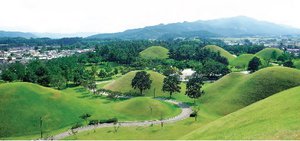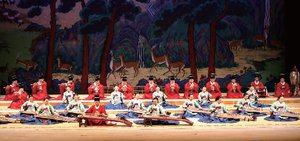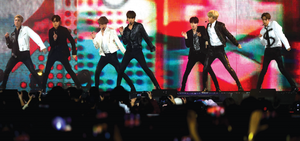한국 정보
한국의 주요 소식 등을 다국어로 전달하고 있는 '코리아넷'의 한국 소개 콘텐츠입니다.
생활
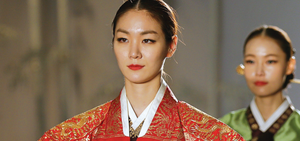
한복
사계절이 뚜렷하고, 국토의 삼면이 바다로 둘러싸여 있으며, 평지보다 산이 많은 자연환경 속에서 살아온 한국인은 우수하고 독창적인 의식주 문화를 발전시켰다. 추운 겨울과 더운 여름을 잘 보내기 ...
더보기
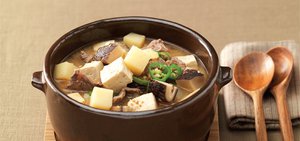
한식
한국인은 몸을 치료하는 것과 먹는 것은 근본이 같다는 뜻의 ‘의식동원(醫食同源)’이라는 관념을 중 시해왔다. 이는 건강이란 식사에서 비롯된다는 사고방식으로, 음식으로 우선 병을 다스리고 난 ...
더보기
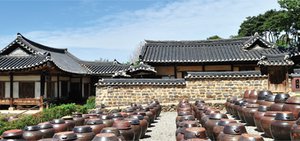
한옥
한국인은 자연환경에 적응하며 한옥이라는 독창적인 주거기술을 발전시켜왔다.
더보기
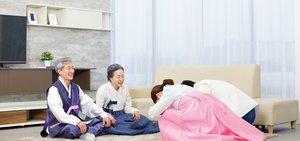
명절, 경축일 등
20세기 초까지 한국은 농경 국가였으며, 주로 음력을 사용했다. 따라서 농사의 풍요를 기원하는 행사 가 많았으며, 이런 행사가 토속신앙과 음력을 기준으로 즐기는 명절과 축제로 발전했다.
더보기
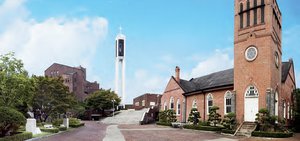
종교
한국은 샤머니즘부터 불교, 유교, 기독교, 이슬람교 등 여러 종교가 평화롭게 공존한다. 2015년 통계 조사에 따르면 한국 인구의 44%가 종교를 가지고 있다.
더보기
사회
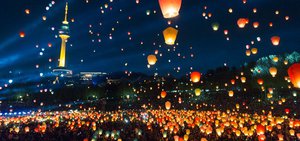
한국 소개
한국은 고유의 언어를 사용하며, 문자는 조선왕조 세종대왕(1397~1450)이 창제한 고유 문자인 한글을 사용한다. 한글은 쉽게 배우고 쓸 수 있다는 점 때문에 세계적으로 우수한 ...
더보기
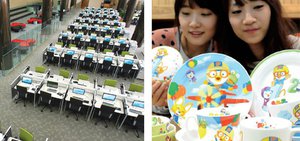
교육·연구·산업
교육제도예부터 한국은 교육 활동을 매우 중요하게 여겼다. 특히 산업화 과정에서 부족한 자본과 자원에 효율적으로 대처하기 위해 인적 자원 육성에 매진했다. 그 결과 높은 교육열이 한국의 ...
더보기
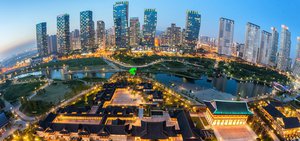
노동 및 복지 제도
사회보장제도한국은 국제 수준의 노동 및 복지 제도를 운영하고 있다. 근로자의 노동 삼권이 보장되며, 공무원도 단체행동권에 약간 제약이 있을 뿐 법적으로 노동권을 보장받는다.
더보기
관광
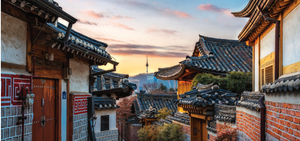
전통과 현대의 조화
한국은 관광자원이 풍부한 나라다. 전통문화와 현대문화가 공존해 관광객이 여러 가지 경험을 할 수 있으며 지역마다 정체성이 뚜렷해 다양한 문화와 자연환경, 먹거리를 즐길 수 있다.
더보기
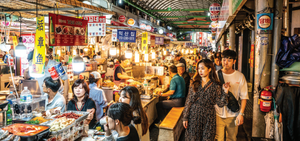
식도락 여행
한국의 먹거리 문화를 제대로 경험하기 위해서는 전통시장을 방문해야 한다. 푸근한 시장 분위기 속에서 현지인들이 좋아하는 한국 음식을 부담 없이 맛볼 수 있다.
더보기
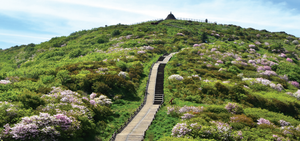
자연과 힐링
한국은 자연 생태계와 자연·문화경관을 보전하기 위해 나라에서 국립공원을 지정해 운영하고 있다.
더보기

여행 액티비티
자전거 라이딩, 오토캠핑, 수상 액티비티, 루지 등 다양한 야외활동을 즐길 수 있다.
더보기
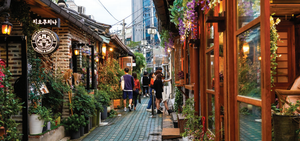
핫 플레이스(인기 명소)
익선동, 성수동, 을지로 거리 등 최근 핫 플레이스로 급부상 중인 명소를 소개한다.
더보기
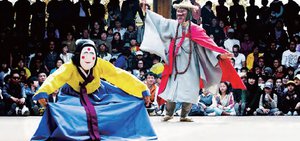
지역축제
한국은 지역마다 정체성이 뚜렷하다. 각 지역을 대표하는 전통과 특산물, 자연환경이 서로 다르기 때문이다. 이러한 지역별 콘텐츠를 더욱 강화하고 널리 알리기 위해 한국은 지역축제가 활성화되어 있다 ...
더보기
의료 관광
한국은 세계 최고 수준의 의료 서비스를 갖췄다. 그중에서도 서울 강남은 13만 명 이상의 해외 의료 관광객이 방문하는(2019년 기준) 의료 관광의 메카다. 강남은 우수한 의료 ...
더보기
스포츠

한국의 스포츠 역사와 발전
한국 스포츠는 지난 한 세기 동안 열악한 환경에서도 헝그리 정신으로 대변되는 투혼을 발휘하며 국제무대에서 활약했다. 또한 한국에서 열린 여러 국제대회를 통해 스포츠 강국으로 성장할 수 ...
더보기
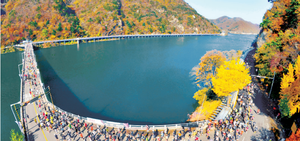
스포츠 활성화 기반
한국은 엘리트 체육과 생활체육이 긴밀히 연결돼 있어, 스포츠 기반이 그만큼 넓다.
더보기
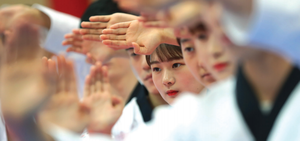
스포츠 강국으로 성장
한국이 세계 스포츠 강국이 될 수 있었던 이유는 폭넓은 스포츠 인구와 체계적인 투자 덕분이다.
더보기
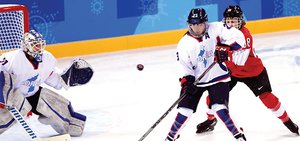
국제대회 개최국으로 위상 강화
광복 후 한국의 스포츠는 비약적인 성과를 이루었다. 특히 1976년 제21회 몬트리올 올림픽 및 1984년 제23회 로스앤젤레스 올림픽 이후부터 10위권에 진입하며 스포츠 강국 자리를 유지하고 있다 ...
더보기
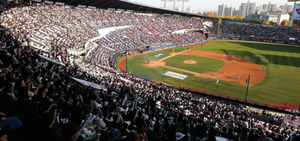
프로스포츠, 땀으로 쓴 역사
한국은 축구, 야구, 농구, 배구, e스포츠, 바둑 등의 종목에서 프로리그를 갖추고 있다. 한국의 프로 스포츠는 1982년 6개 팀으로 구성된 프로야구가 탄생하면서부터 발전하기 시작하였다. 이후 1983년 ...
더보기
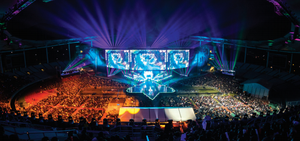
스포츠 강국에서 스포츠 선진국으로
한국이 스포츠 선진국으로 나아가기 위해 2017년, 정부는 100대 국정과제 중에 ‘모든 국민이 스포츠를 즐기는 활기찬 나라’라는 비전을 포함했다. 삶의 증진과 건강한 나라를 위한 복지수단으로 ...
더보기
역사
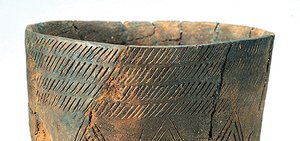
역사의 태동(선사시대~고조선)
한국 역사는 만주와 한반도 지역에서 시작됐다. 이 지역에 사람이 살기 시작한 시기는 70만 년 전으로 거슬러 올라간다. 동물의 뼈나 뿔로 만든 도구와 뗀석기를 사용했던 구석기 ...
더보기
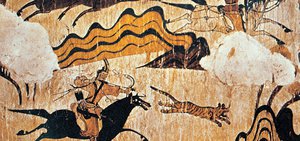
삼국과 여러 나라의 탄생
고조선 말기, 만주와 한반도 일대에는 새로운 부족국가가 속속 탄생했다. 부여는 만주 지린 지역을 중심으로 쑹화강 일대의 평야 지대에서 발흥했으며, 농경과 목축 생활을 하면서 말과 모피 ...
더보기
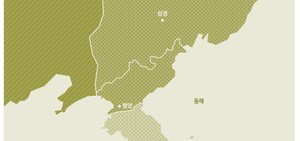
남북국 시대: 통일신라와 발해
삼국을 통일함으로써 신라의 영토와 인구는 크게 늘고, 경제도 비약적으로 성장했다.
더보기
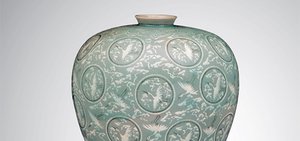
고려시대
8세기 후반, 신라는 중앙 귀족들의 권력 쟁탈전으로 쇠약해졌다. 지방 통제력이 약화되자 10세기에는 견훤과 궁예로 대표되는 지방 세력들이 독자적인 정권을 세웠다. 892년 견훤은 완산주를 도읍으로 전라도와 ...
더보기
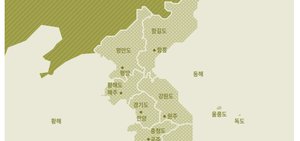
조선시대
14세기 말 고려는 권문세족의 과다한 권력 집중, 홍건족과 왜구의 침입 등 내우외환에 시달렸다. 홍건족과 왜구 격퇴로 민심을 얻은 장군 이성계를 중심으로 한 세력이 고려의 왕을 ...
더보기
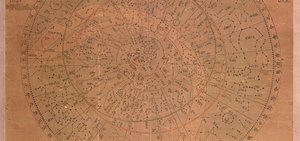
조선의 멸망, 일제의 한국 강점
18세기 산업혁명을 거치면서 서구에는 자본주의가 발달하고 거대한 기업도 탄생했다. 서구 제국 들은 아시아, 아프리카 등 해외로 진출해 식민지를 확장했다.
더보기

독립 투쟁
일제는 식민통치를 하면서 조선의 자원을 빼앗고, 고유의 언어와 문자, 이름까지도 바꾸도록 강요했 을 뿐 아니라 한국인을 제국주의 전쟁의 노동력과 군사력으로 강제 동원했다. 이런 와중에 한국인은 ...
더보기
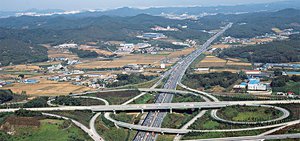
민주국가, 경제대국으로 발전
1948년 5월 10일, 유엔 감시하에 한국 역사상 최초의 민주적인 총선이 한반도 남쪽에서 실시되어 198명의 국회의원이 선출됐다. 이들은 같은 해 7월 17일 헌법을 제정하고, 7월 20일 ...
더보기
정부
헌법
한국 정부는 1948년 8월 15일 출범했다. 이보다 3개월 전인 5월 10일 유엔의 감시하에 실시된 한국 역사상 최초의 민주적인 총선거에서 제헌의원 198명이 선출됐다.제헌의회는 7월 17일에 ...
더보기
입법부, 행정부, 사법부
국회는 국민의 의사를 대표하는 기관으로 모든 법률은 국회에서 만들어진다. 현행 국회의원의 임기는 4년이며, 정원은 300명이다. 1948년 5월 31일 제1대 제헌국회가 출범했으며, 2024년 4월 10일 총선으로 ...
더보기
독립기관
입법부, 행정부, 사법부 외에도 전문화된 독립기관들이 각각의 기능을 수행한다.
더보기
지방자치단체
지방자치제도는 1995년 6월에 전면 시작됐다. 1949년 지방자치법이 제정됐으나, 한국전쟁과 4·19 혁명, 5·16군사정변 등으로 이어지는 정치적 격동기를 거치면서 지방자치법의 효력이 정지되거나 선거가 연기돼왔었다.
더보기
국제관계
한국은 국제 평화주의에 입각해 세계 각국과 우호 협력 관계를 적극적으로 증진해 나가고 있다. 2020년 6월 기준, 한국이 외교 관계를 수립한 국가는 총 191개국으로 그 중 ...
더보기
경제
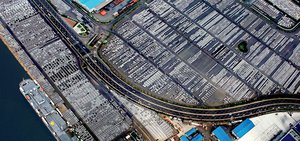
세계 속의 한국 경제-한강의 기적
한국은 짧은 기간에 고도성장을 이뤄냈다. 휴대전화, 반도체, 자동차, 화학, 철강 등 여러 분야에서 세계적인 경쟁력을 갖추고 있으며 최근에는 음악, 게임, 웹툰 등의 문화 콘텐츠가 한국 ...
더보기
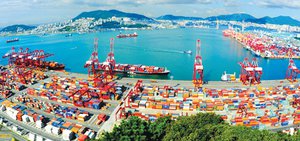
자본주의 개방 경제
개방 경제를 지향하는 한국은 세계 각국과 자유무역협정을 확대해 나가고 있고, 투자도 자유롭게 하고 있다. 해외 자본 투자에 각종 혜택을 주며 이를 장려하고 있는데, 그 이유는 ...
더보기

브랜드 리더와 코리아 스탠더드
정부는 매년 ‘세계 일류 상품’을 선정하여 수출 품목의 다양화, 고급화를 도모하고 수출 동력을 확보 하기 위해 노력하고 있다. 지난 2001년 120개 품목, 140개 기업으로 ...
더보기
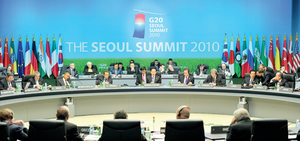
글로벌 성장의 노력
한국은 글로벌 경제 구조로 전환하려고 노력 중이다. 한국은 짧은 기간에 고도성장을 이뤄냈다. 이 과정에서 중소기업보다 대기업을 통한 수출 위주의 경제 정책을 추진함으로써 대기업과 중소 기업의 ...
더보기

